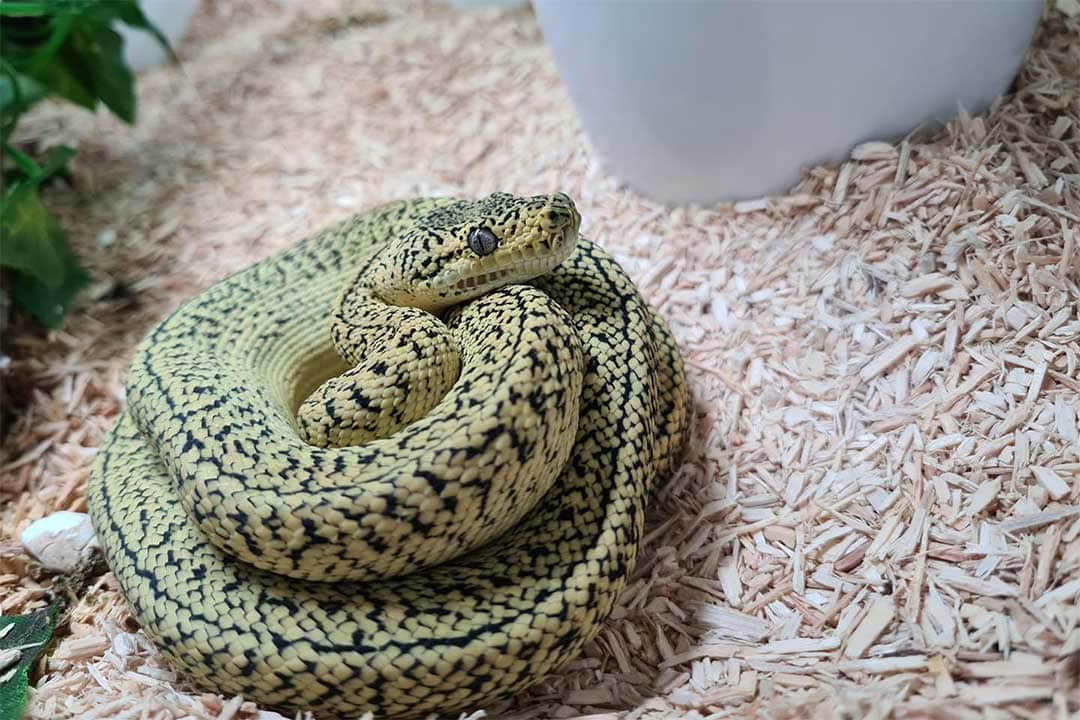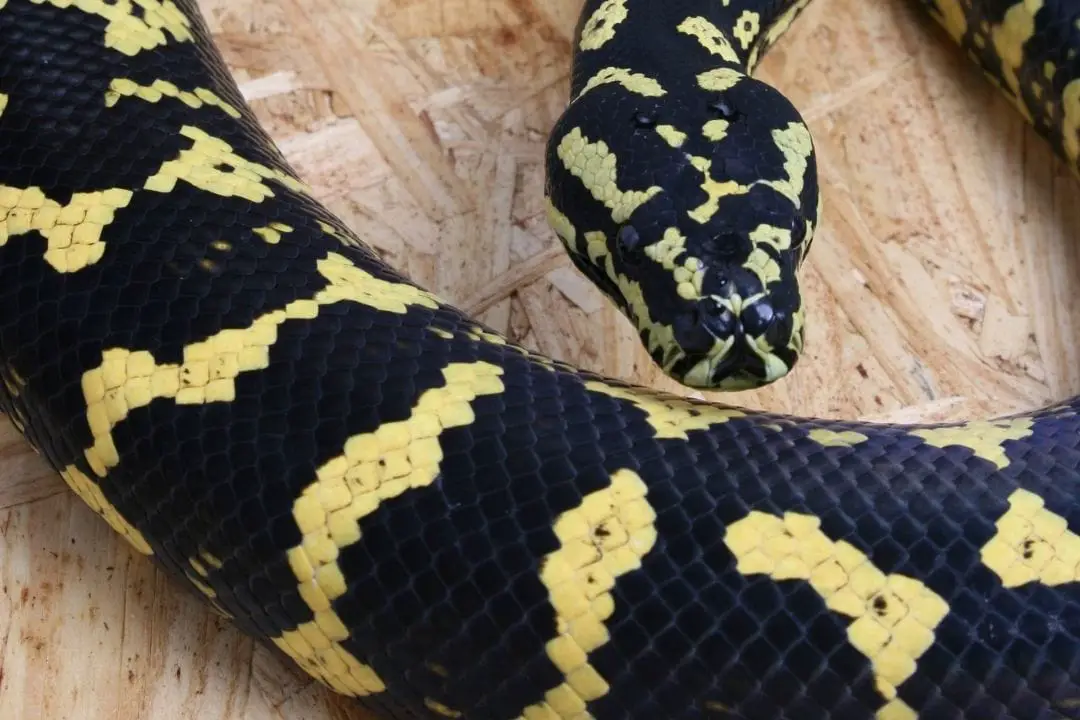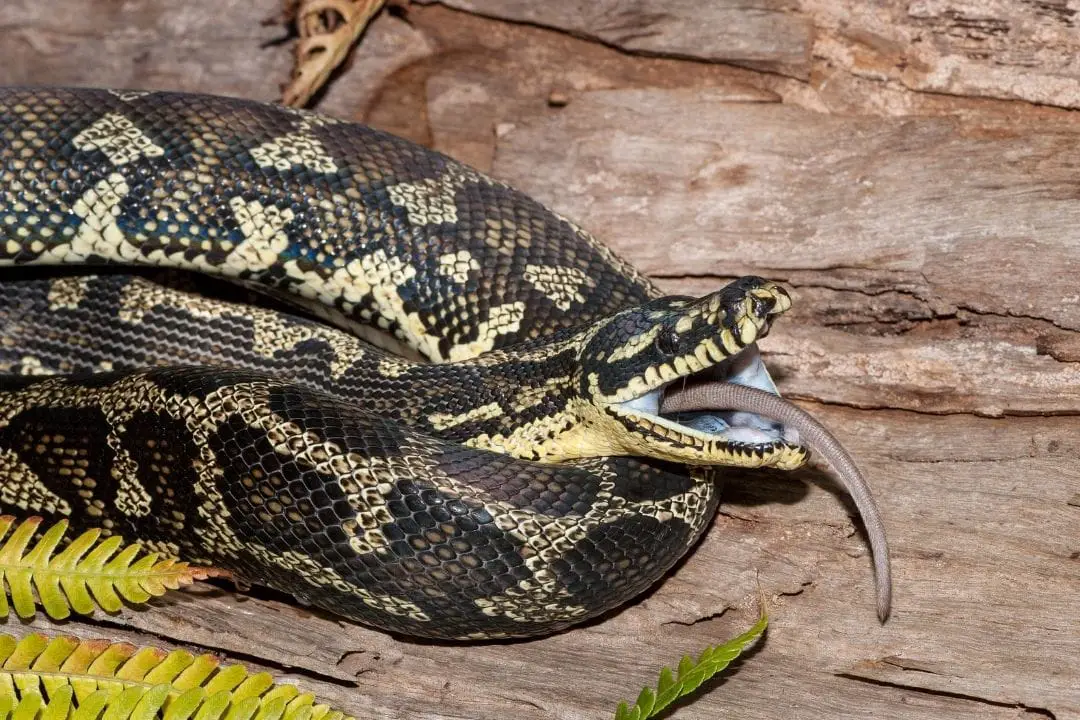The carpet python (Morelia spilota) is a very popular python mainly found in Australia. Captive animals have been selectively bred for certain colors and patterns known as morphs.
This is a short list that goes over a few common and popular morphs. Most originated with a single subspecies, but you may see crossbred animals that could have multiple genes.
Be sure to ask the breeder what the genetic background of your potential snake is.
For a complete guide to enclosure setup, feeding, daily care and breeding,
check out my Carpet Python Care Sheet.
1. Jaguar Coastal Carpet Python
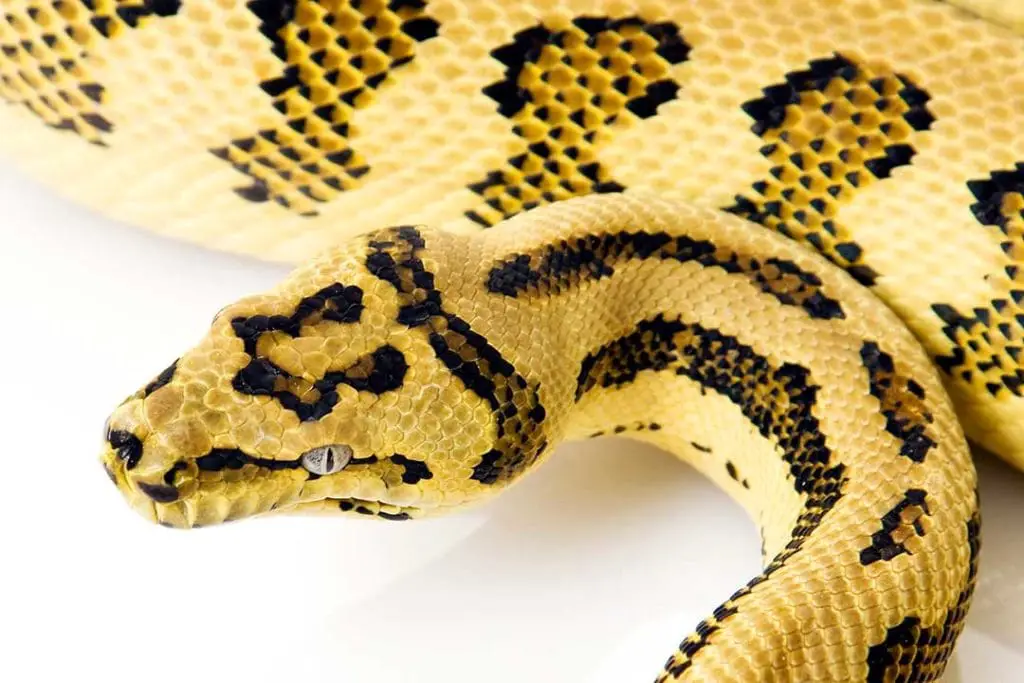
The jaguar morph was originally found in a coastal carpet python (M. s. mcdowelli) in 1994. The morph was named in 1997. It is a co-dominant gene.
This gene reduces patterning and reduces the darker pigments. Many snakes with this gene also display more intense yellow pigment.
It can only be found in a heterozygous form with one copy of the gene expressing. Having two copies or a homozygous form of a co-dominant gene like this is referred to as a super form.
In the jaguar gene, it causes a leucistic snake. However, it is fatal to the snake. No snake with the super form of the jaguar gene has survived longer than a day.
This is normally caused by defects in the lungs. Snakes with only one copy also have neurological issues. This can be as minor as a slight wobble that is nearly unnoticeable to animals that corkscrew and cannot right themselves easily.
It seems the defect is related directly to the gene, so it cannot be bred out. This makes this nearly identical to the spider gene in ball pythons, including the lethal super form.
2. Albino Carpet Pythons
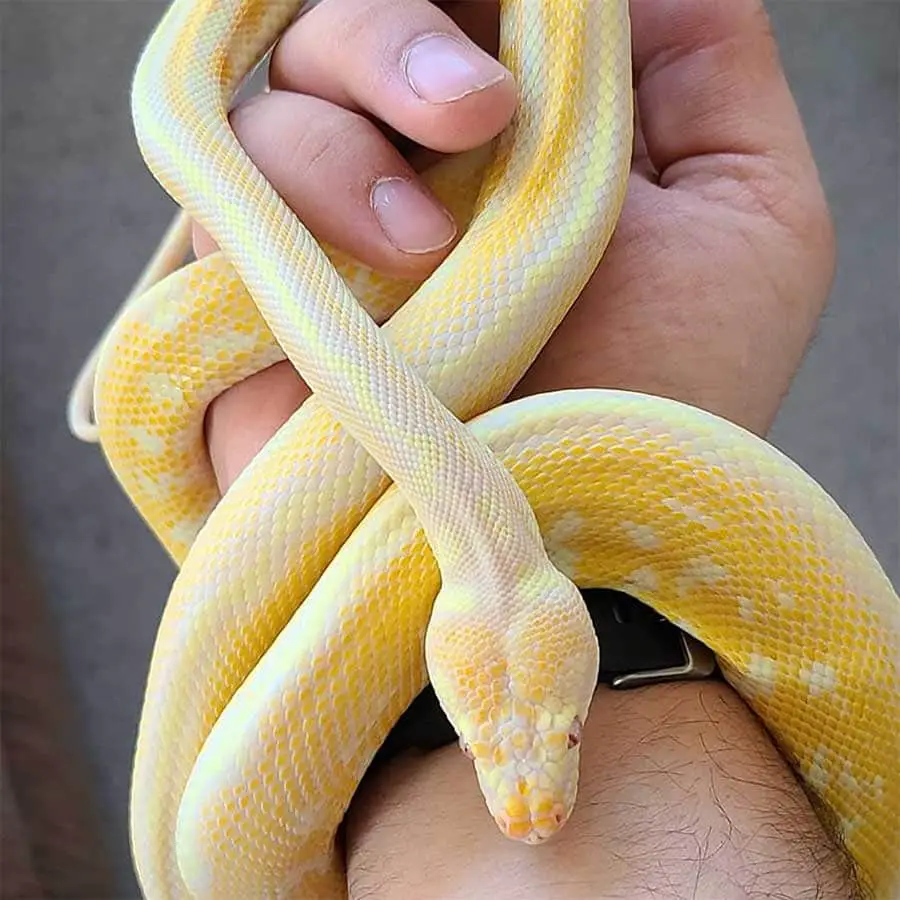
The albino gene was originally found in the Darwin carpet python (M. s. variegata). These animals typically lack dark pigments, meaning you will see yellow, orange, and even purple-toned snakes.
This is a recessive gene that mixes well with other genes to produce unique looks. Some breeders also focus on creating more intense reds or orange tones in their breeding stock.
Be sure to check what subspecies your potential snake is since many will be mixed.
3. Axanthic
An axanthic snake is lacking yellow pigment. Most axanthic snakes are gray-toned. This is a recessive gene that was first found in the coastal carpet python (M. s. mcdowelli).
There are also lines of axanthic snakes found in the Irian Jaya carpet python (M. s. harrisoni) and jungle carpet pythons (M. s. cheynei).
You cannot get the jungle carpet pythons outside of Australia due to a ban on python exports. Most snakes will have a gray background color, but certain genes can result in very striking patterns.
4. Granite
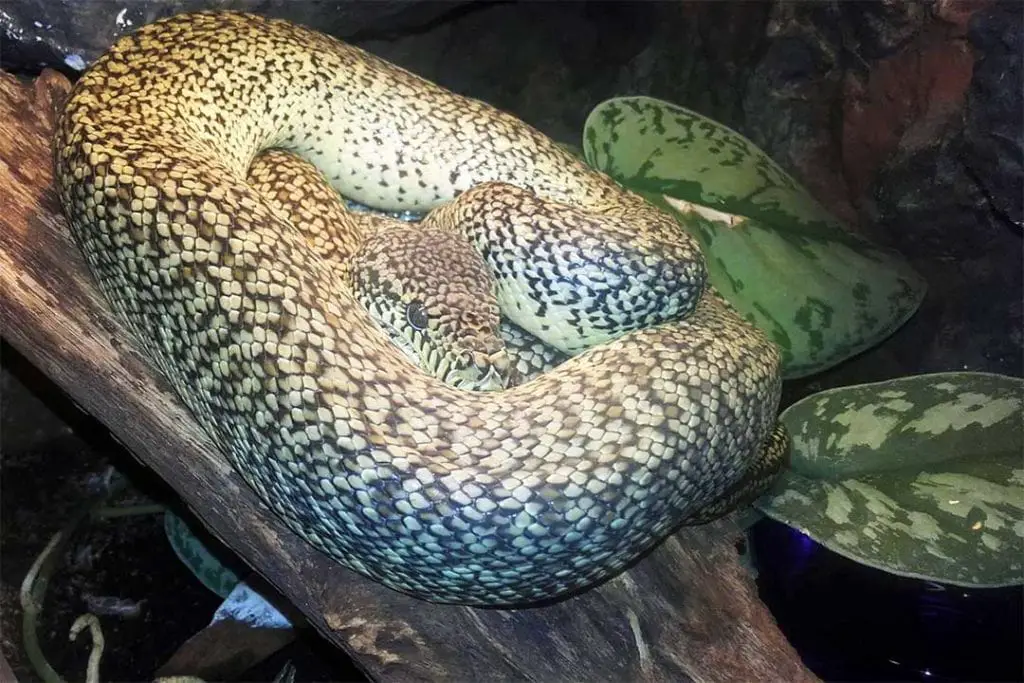
The gene that causes the granite morph is a simple recessive gene. It was originally found in an Irian Jaya (M. s. harrisoni) kept in a collection in the Netherlands.
The typical pattern for this species is broken up, resulting in individually colored scales. This resembles the pattern of granite. This is very commonly combined with the axanthic gene also found in this subspecies.
5. Caramel
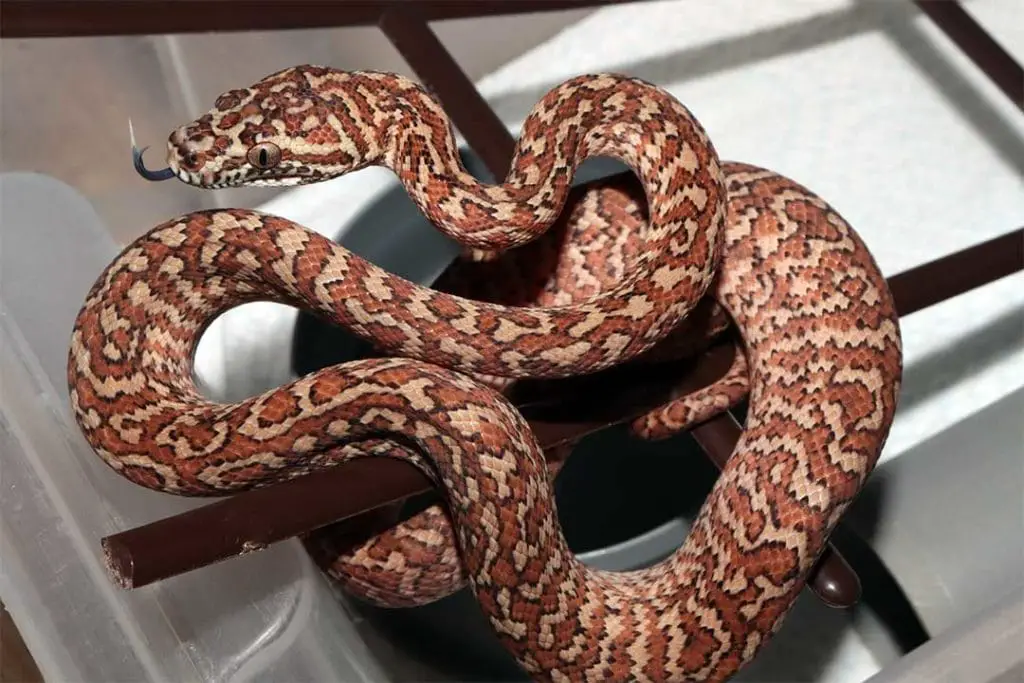
Caramel is a co-dominant gene that produces snakes with yellow and red tones that frequently make a warm, caramel color. You will see a lot of bronze and gold coloration in these animals.
It was first found in the coastal carpet python (M. s. mcdowelli). They have reduced dark pigments. They hatch out red or brown and typically express more yellow as they age.
There is a super form that results in brighter colors. They have a complete lack of darker colors and patterns. This is a common combination with other genes to create other morphs.
6. Hypomelanistic
Hypomelanistic snakes are also frequently called “hypos” among breeders. This is another co-dominant gene discovered in the coastal carpet python (M. s. mcdowelli).
Hypomellanisitic animals lack black pigments, so these animals have more intense yellows and reds compared to normal animals.
This gene is used with others to create morphs like the Moonglow (hypo albino axanthics), sunglow (hypo albino), and ghosts (hypo axanthics).
This is a fairly new gene, so it is still being experimented with. More information will be discovered as more breeders begin working with this gene to learn how it works.
7. Zebra
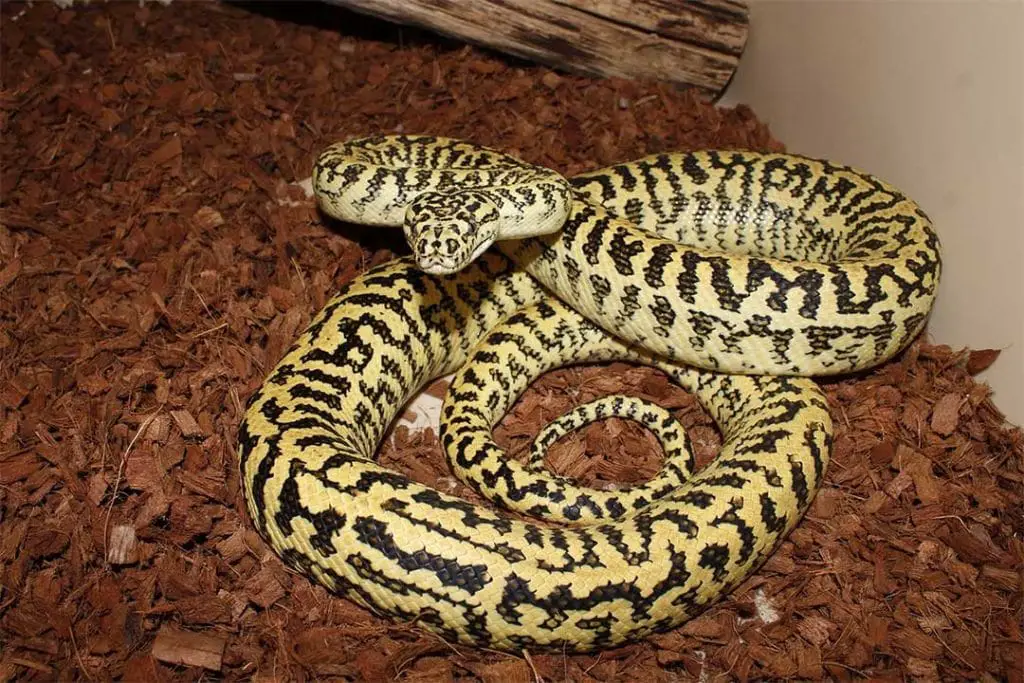
Zebra is a gene discovered randomly among captive-bred jungle carpet pythons (M. s. cheynei) in a private collection. Their pattern is changed to a unique banding reminiscent of a zebra’s stripes.
This is a co-dominant gene. A pure jungle carpet python with the super form of the zebra gene will be a patternless animal with a yellow base color.
All super zebras will be patternless with a single base color. The exact color will vary based on what gene it was combined with.
8. Striped and Tiger
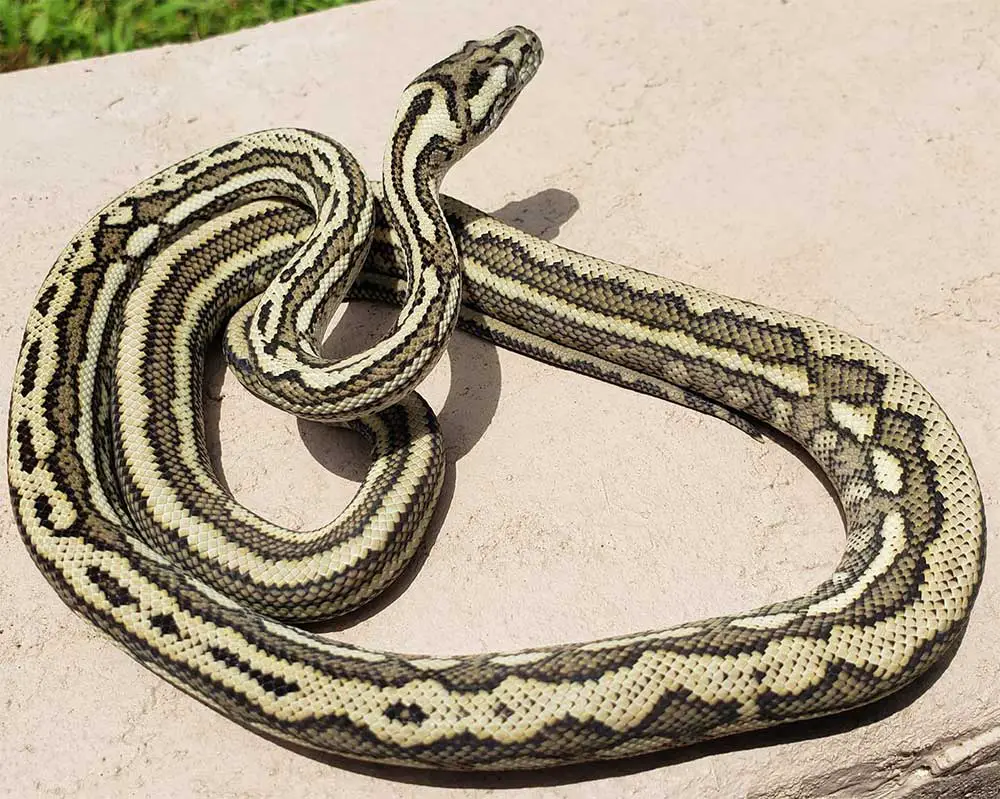
Striped and tiger both refer to the same gene in coastal carpet pythons (M. s. mcdowelli). All striped carpet pythons have a dorsal stripe and many have a lateral stripe.
Some animals have this lateral band that appears as ovals along the side of the body. Tiger carpet pythons are animals that descend specifically from one line bred by James Neville.
Tigers typically have slightly different neck markings and headstamps than animals from other lines.
Conclusion
This was a short list of a few base morphs in carpet pythons. You can find others and specific names that refer to gene combinations.
Do your research on enclosure setup and proper care for any snake and ask the breeder questions so you know what you are getting and what it may look like as an adult. If you have any questions or comments, leave them below.
